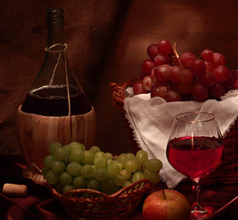Lees: Sediment—dead yeast cells, grapeseeds, stems, pulp and tartrates (harmless tartaric acid crystals)—remaining in a barrel or tank during and after fermentation. Immediately following fermentation, wine should be racked off of the gross lees, the large particulate matter such as seeds, skins and stems, which are rich in spoilage organisms. The wine may be aged for an extended period on the fine lees, however, in what's called "sur lie" aging. Fine lees, the dead yeast cells leftover from fermentation, can enhance an aging wine with added richness, flavor and aroma complexity, and can also bind with excess tannins.
酒泥(酒脚): 发酵期间及发酵后残留在橡木桶或发酵罐里的沉淀物----死亡的酵母细胞,葡萄籽,果梗,果肉和酒石酸盐(无害的酒石酸结晶)。发酵一结束,葡萄酒立即被压榨出来,去除酒泥,因为酒泥中的大颗粒物质,比如葡萄籽,果皮和果梗中含有丰富的腐败菌。然而,在保留酵母陈酿中(即所谓的“sur lie”),葡萄酒可以与精细的酒泥一起陈酿一段时间。精细的酒泥,即发酵后残留的死亡酵母细胞,可以增强陈酿葡萄酒的丰富度,风味和香气的复杂性,还可以与多余的单宁结合。







